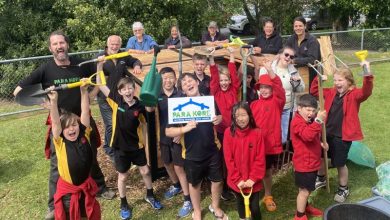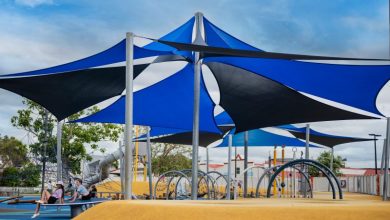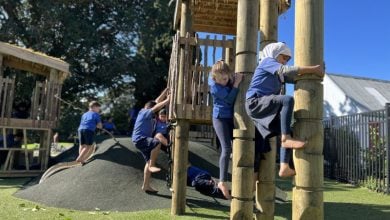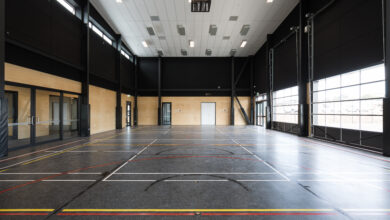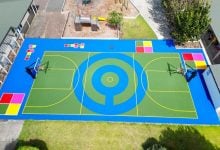Good planning leads to success at Hereworth
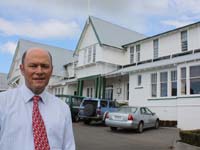
 Hereworth School for primary-aged boys in Havelock North, Hawke’s Bay, has an impressive history stretching back more than 100 years.
Hereworth School for primary-aged boys in Havelock North, Hawke’s Bay, has an impressive history stretching back more than 100 years.
Administered by the local Anglican Diocese, it is one of very few independent boys’ schools for that age group now remaining. Once largely a boarding school, its roll of 215 is now made up primarily of day boys, but around 40 boarders still attend.
Hereworth has a number of outwardly imposing heritage buildings, but by the year 2000 or so, the school board was becoming concerned the facilities were outdated, tired, and no longer presenting an attractive face to the community and prospective parents, or adequately serving the needs of the boys and their teachers. The school roll was around 156 and either static or falling.
It was time to do something about it, and so began a long and productive relationship between Hereworth School and a prominent national firm of architects well experienced in school design.
“The board members knew they had to expand and that some buildings were redundant,” said Richard Daniels, the design architect and the manager of the Napier-based team from Opus Architecture. “They realised they should have an overall plan to cover refurbishing the best of the old buildings and constructing some new ones, so it would all fit together in a co-ordinated whole.
“We really first became involved in the year 2000 when we were invited to have a discussion with members of the school board. They were considering much more than just what to do about buildings – they were thinking about Hereworth’s place in the world. They had already decided Hereworth would remain an independent private school, but they wanted to make sure it was still providing a good education for its pupils and to establish where the school should be at in 10 to 20 years time.” It was decided to establish some priorities, Daniels said.
“We carried out a strategic plan of the buildings and grounds to find out what old buildings were worth keeping, how we could adapt them to modern uses, and where the gaps were in what the school was offering. Improving technology was an obvious need to meet modern learning and curriculum requirements.
“The classrooms were of several oddball sizes and shapes, restricting what the teachers could do with their classes, while the boarders’ dormitories were fairly spartan and needed to be made more homely.
“The school wanted to make reading and literacy as attractive as possible, so it was important to have an excellent library that was a ‘cool’ place to be. Those were some of the priorities that came out first,” Daniels said.
 |
 |
 |
 |
Project Wiremu
Initially, some minor refurbishment of classrooms and the boarders’ dormitory was undertaken and it was about this time that the present principal, Ross Scrymgeour, arrived to take up his new role.
“The most pressing need was to upgrade our main block (Wiremu) which is 100 years old next year, and then to develop a technology and music block,” he said. The old block needed strengthening and only about 30 per cent of it was even being used.”
Richard Daniels describes Wiremu as Hereworth’s flagship heritage building, “a classical looking old wooden homestead, but back then “a bit of a rabbit warren inside. The cost of upgrading it was going to be considerable and board members had to think hard about whether it might be better to replace it with something new. Eventually they decided there was so much history associated with it that it should be retained.” So, in 2002, renovations began.
Said Daniels: “Our structural engineers wove a lot of new structure through the old building to make it considerably stronger, and we restored key features, such as the stairways and entrance. We gutted other parts and created new configurations for classrooms – more sensible shapes and better integration with resources and information technology. Then we upgraded the building services, such as lighting and data to support the new technology, and put in insulation to reduce energy use. While it looked like an old building, it performed like a modern one.”
New art, library and technology areas were put into Wiremu as well. Said Scrymgeour: “There was quite a dramatic change in the four or five year period. Now, we’re able to use a good 80 – 90 per cent of the building – which is fantastic.”
At around the same time, the aging boarders’ dormitories were upgraded, the headmaster said. “We fitted a special material to the walls so the boys could put up their photos and pictures, and gave them better beds and more space. We replaced the soft furnishings and built a really bright, colourful common room – a home away from home.”
Daniels: “A major component was the bathroom and shower area. The boys are encouraged to be very physically active, so the showers had to work for a large number at the same time.”
Then came something a little different – the creation of a Founders’ Room in Wiremu. It is a place where a lot of the visual memories of the school are kept and displayed – such as sporting trophies, honours boards and archival photographs, in a style and lighting similar to a small art gallery.
Technology and music
Now it was time to action the plan for a new music and technology block that had been envisaged at those early planning meetings, and Opus Architecture was asked to design and oversee the construction. While quite contemporary in its styling, it was intended to be compatible in scale and form to the existing heritage buildings. Construction began in 2005.
“We took over a corner of the playground and used the new building to help level and shape the playgrounds into more of an enclosed space, suitable for ball games, as part and parcel of the project,” Daniels said. “It was fundamentally a new building in an underutilised corner of the grounds. Now it has very good food technology, soft and hard materials rooms on the ground floor, while above that is the music room, and two suites for computer and media studies.”
Scrymgeour: “Essentially there are six good, flexible learning spaces which at present are being mainly used for: music, speech and drama, and ICT computer/ media study-type work. The technology has four aspects: soft materials, hard materials, food tech, and media studies.
“While academics is the number one priority in any learning institution, with boys, other components are important as well. The new developments meant we were able to have academics in the traditional type class situations, then the boys would have a period where they’d go and do something hands-on. It might be woodwork or something to do with material, then they’d come back and do some more academic work – then go outside and do something physical. The day could be broken up to keep the boys focused.”
He said technology and music was part of a wider vision. “We’d made a commitment to being a school especially designed to turn boys on to their learning. The facilities had to be appropriate to that kinesthetic, visual, hands-on style.
“The new block has given us a lot more flexibility and we can now offer all the boys considerably more on-site. We used to have to bus them away for their technology programme.”
The new building helped Hereworth to make its next move – starting a junior school for years one to four. Opus Architecture converted what had been the old science labs into a three-classroom primary school block.
Airbridge connections
A somewhat unusual recent achievement from Opus was to deliver ease and safety of movement between buildings in close proximity to one another, connected by simple, modern airbridges with steel frames and glass walls. These connect the first floors of the heritage buildings to the dormitory and the new technology and music facility. “It gives the school quite a different, dynamic character because you have these lovely, old weatherboard buildings with quite hi-tech bridges connecting them to the adjacent buildings,” Daniels said.
“All the glass makes the bridges nice and sunny, and the boys use them for activities such as reading and playing chess and just to enjoy being up in the air, as well as circulating around the school.”
More changes ahead
The redevelopment of Hereworth is yet to be completed. Changes to the school hall and perhaps a new gymnasium are next on the list to complete the strategic plan conceived 12 years ago, with work likely to begin next year.
In the meantime, Ross Scrymgeour says the school is well satisfied with what has been achieved so far. One example is Wiremu. “Because we can now have specialist teachers in different rooms, our performing arts have gone through the roof in achievement. The boys now want to do much more in playing instruments singing, drama and so on.
“We’re very pleased with the facilities we have now. It’s a real selling point for the school.”
Richard Daniels is also happy with the part Opus has played. “We’re really pleased, mainly because the school’s really pleased. They’ve got a fantastic environment now, for the boys and their teachers.”
“For some features, such as the music rooms and IT suites, we were able to draw on the expertise of other architects within Opus Architecture, who are acknowledged as national leaders in their fields – a team of in-house mentors who contributed ideas,” he said.
Opus Architecture has a staff of 90 people, including nine in Hawke’s Bay.
By Brent Leslie

